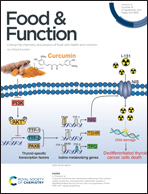18β-Glycyrrhetinic acid inhibits IL-1β-induced inflammatory response in mouse chondrocytes and prevents osteoarthritic progression by activating Nrf2
Abstract
Osteoarthritis (OA) is presently the most prevalent form of chronic degenerative joint disease, which is characterized by erosion of articular cartilage, subchondral bone sclerosis and synovitis. Accumulating evidence has revealed that 18β-glycyrrhetinic acid (18β-GA), a major bioactive component derived from Glycyrrhiza glabra, exerts anti-inflammatory effects on several diseases. However, the anti-inflammatory effects of 18β-GA on OA remain undetermined. The present study aimed to investigate the anti-inflammatory effects of 18β-GA on chondrocytes and the therapeutic effects on destabilization of the medial meniscus destabilization (DMM) mouse models of OA. For the in vivo study, we randomly divided the mice into three groups: vehicle control (n = 15), sham (n = 15) and 18β-GA (n = 15) groups, and treated them with similar doses (50 mg kg−1 day−1) of 18β-GA or saline. Cartilage tissues were harvested from the mice for histological analyses eight weeks after operation. For the in vitro studies, mouse chondrocytes were administered with 10 ng mL−1 interleukin-1β (IL-1β) after being treated with 18β-GA at various concentrations. In vitro assays revealed that treatment with 18β-GA considerably suppressed the expression of pro-inflammatory mediators and cytokines, including prostaglandin E2 (PGE2), tumor necrosis factor-α (TNF-α), nitric oxide (NO), cyclooxygenase-2 (COX-2), inducible nitric oxide synthase (iNOS), and interleukin-6 (IL-6), which were induced by IL-1β. Furthermore, 18β-GA decreased the expression of matrix-degrading proteases, including matrix metalloproteinase 13 (MMP13) and A disintegrin and metalloproteinase with thrombospondin motifs 5 (ADAMTS-5), in a concentration-dependent manner, which mediated extracellular matrix (ECM) degradation. 18β-GA reversed aggrecan and type II collagen degradation. Furthermore, we observed that 18β-GA significantly suppressed IL-1β-induced nuclear factor kappa B (NF-κB) activation by activating the nuclear factor erythroid-derived 2-like 2 (Nrf2)/heme oxygenase 1 (HO-1) pathway in vitro and in vivo. Experiments demonstrated that 18β-GA might alleviate the progression of OA in the DMM mouse model in vivo. The findings demonstrate that 18β-GA reduces inflammation induced by IL-1β in chondrocytes. Therefore, 18β-GA could be a potential therapeutic agent for OA.



 Please wait while we load your content...
Please wait while we load your content...